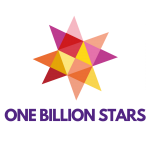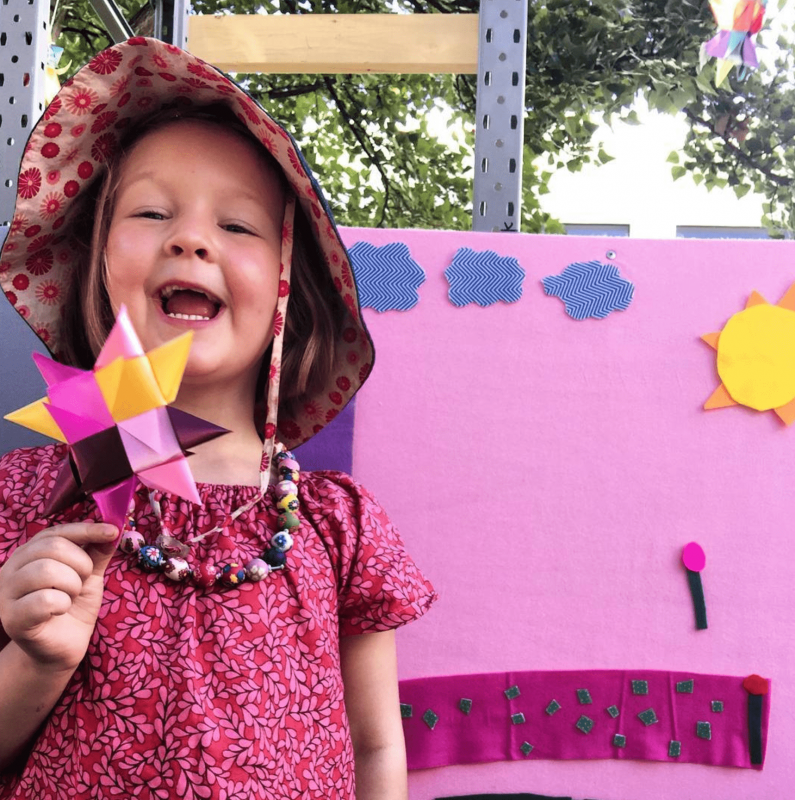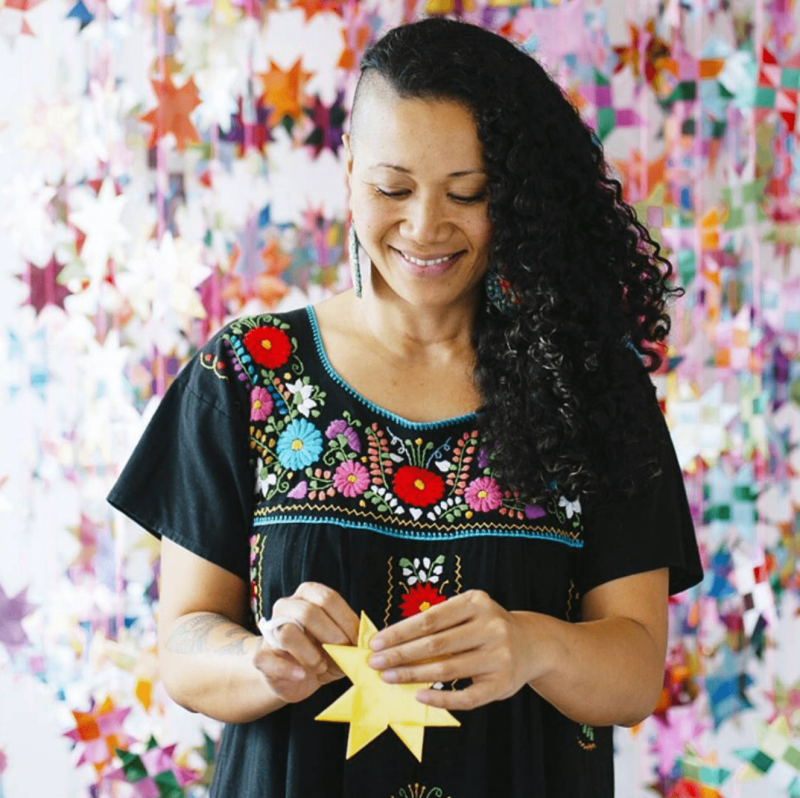What impact does star weaving have on ending violence?
Since 2012, communities have come together around the world to focus on weaving stars as their commitment to end violence and to increase safety, inclusion, and peace.
Sometimes we get asked the question, “So, how does star weaving end violence?”
Often it feels easy to answer, other times it’s a bit more layered but here’s what we’ve seen:
Star weaving helps people to end violence by focussing on small, daily actions of treating others with respect, kindness and dignity. Star weavers advocate for their communities to participate, raising awareness about the need to end violence together. Star weaving helps people to feel less isolated and more in touch with their community.
As we weave our way to One Billion Stars, we’re excited to learn more about why and how this small, Pacific Island craft is helping us to make a positive impact on the communities we care deeply about.
What is star weaving?

Star weaving is a traditional weaving craft that can be found throughout the South Pacific, including Samoa, Aoteroa New Zealand and Guahan Guam. It can also be found in the Torres Strait Islands, Germany, Hungary and the Philippines.
I ‘accidently’ taught myself how to an 8 pointed star after experimenting with weaving fish sculptures. When I began weaving 16 years ago, I was determined to learn as much as possible about Samoan and Pacific Island weaving.
I was thrilled to learn that the 8 pointed star is same weaving technique my mother used to make windmills and star toys as a child in Samoa. It’s also the same weave that master weaver, Nino Sabatino, from the Torres Strait showed me, many years ago.
The star that is woven for the One Billion Stars project has 8 points, a square centre and is made using 4 different coloured strands of ribbon, paper or long plant fibres. It is a medium skill level technique and can take anywhere between 5 to 10 minutes to make.
The shortest time recorded for weaving a star is just over 2 minutes!
In Samoa, stars are usually woven with dried pandanus leaves from the pandanus plant as decorations or as additions to bags and mats. In Aoteroa New Zealand, stars can be woven with harakeke / flax. Sometimes the stars, also known as the Matariki star, are woven with dried or fresh flax leaves. In Māori culture, Matariki refers to the Pleiades star cluster star and the celebration of the first rising in late June.
Most people weave stars using colourful florist ribbon or cut strips of paper.
It’s super easy to learn how to weave a star. You can watch our tutorial here or buy one of our star weaving kits that includes paper instructions here.
The 8 pointed star design is also found in quilts and beading of First Nations peoples of North America. It has several meanings, including hope and guidance. Many faiths have unique meanings for the 8 pointed star which you can learn more here.
There are multiple ways to weave and finish an 8 pointed star. We’ve even created a guide on how you can finish your star. The star weave we teach to people around the world is the most simplest technique we have found.
How is star weaving being used to end violence?

As we build One Billion Stars, we’re learning more about the positive impact of star weaving on those who have survived domestic or violent behaviour and those who are concerned with making the world a safer place.
Susan Waruingi, one of our star weaving leaders in Kenya, shares:
“We identified places where Gender Based Violence runs high and that’s where we decided to pilot. Weaving stars is a way of making a big issue manageable and helping people open up about Gender Based Violence. “- Susan Waruingi. ICS Volunteers. Kenya
To add to this, we found this article by Sarah Riley:
“Positive Effects of Art Therapy for Women and Children from Backgrounds of Domestic Violence,”
Riley writes:
“Art therapy can be molded and designed around each and every individual patient and issue, addressing not only the physical and mental aspects, but also reaching deeper into the emotional and spiritual.” – Sarah Riley
We agree with what Riley writes, where star weaving is our art therapy.
We noticed the positive calming impact of star weaving, regardless of people’s history. Some star weavers are survivors of domestic violence, some are rehabilitating from being violent to others, some are wanting something to can give them meaning and purpose.
While the immediate focus for One Billion Stars has been to share star weaving with local communities, women’s centres, workplaces and schools, we are still uncovering some deeper research and data collection.
For example, what is the importance of art and crafts participation by those who currently demonstrate violence behaviour? What about offenders or criminals in prison, how can arts and crafts like star weaving help in their rehabilitation and re-entry?
In an article about the importance of art and music for criminals by former warden, Laura Bedard, Bedard shares stories of her experiences working in prisons:
“Art and music allows inmates an opportunity to express their feelings…Many were brought up in totally dysfunctional homes, abused, used and neglected.”
Bedard goes on to say:
“I have seen inmate lives transformed through art and music. Recently in the hall I was talking to an inmate who suffers from an anxiety disorder. He told me the only way he was coping with his prison experience was the couple hours a week he gets to go to the music room and play guitar.”
After more searching online for examples of how star weaving might follow in the steps of these case studies, I found an in-depth research paper by Sarah Lyn Little:
An exploration in the ways in which Art Therapy complements and enhances cognitive-behaviour therapies in the rehabilitation of violent offenders. 2007
Little writes about Cognitive therapist Keven Kuehlwein (2000), who supports creativity to Cognitive Behavioural Therapy for violent offenders:
“(Keuhlwein) encourages using concrete, physical exercises to help clarify and deepen clients’ awareness of the nature of their problems because such interventions make an impression on an experiential level, which is generally more impactful and lasting. Experientially based interventions affect individuals on many levels including cognitive, visual, motor, auditory and emotional.” (Little, 2007, p.50)
Star weaving is an experience that engages individual creativity while centred on being part of a community solution.

It can viewed as a whole of health experience and has the potential to impact victims of violence as well as the perpetrators.
While there are many people who have suffered from violence and do not become violent themselves, these case studies suggest that implementing and normalising regular art and crafts experiences has lasting benefits.
What if we lobbied for more communities to practice arts and crafts to support healthy behaviour before people become victims, survivors or perpetrators of violence?
What would that look like and can star weaving be one of the answers?
It feels like the deeper we dive into this research, the more questions we have, which is exciting!
What we can answer confidently is that to end violence, we’ve got to understand why it’s happening and what environments create this.
This takes time, empathy, listening to stories that can be painful and uncomfortable to hear.
It takes energy to create safe space for disclosure and truth telling. We need frameworks that can protect and guide people as they tell their stories and experiences, and we need skills, expertise and professionals from a range of backgrounds.
It’s a lot of work, a lot of collaborations and a lot of conversations.
But, it’s possible. And it’s already happening.
My hope is that the stars can complement this ongoing and complex work.
What is clear is that the arts have an important role to play in helping us to get to the deeper issues and emotions of violent behaviour. This is where the transformation and healing needs to happen and be sustained.
One Billion Stars is that gentle, and maybe even annoying reminder that ending violence won’t happen overnight. It will still be our work after 100 million stars or one billion stars are woven.
What will also happen, is a more conscious and brave community of star weavers who want to practice the remedy of violence, which is to be mindful, inquisitive, kind and generous.
This is the power of the One Billion Stars project and we’re excited about the impact we can make over the years to come.
Ending violence vs Increasing joy, belonging and community connection.
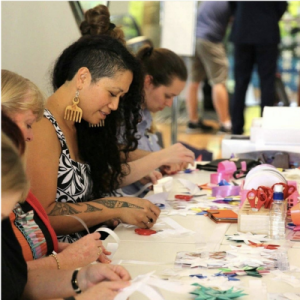
Ever notice how it’s easy to pay more attention to the sad and tragic news, than it is to remember the good stuff?
In Margaret Haworski’s article, ‘The Negativity bias: Why the Bad Stuff Sticks,’ Haworkski explains that we’ve inherited this bias from our earliest ancestors.
“The “bad stuff” is similar to the sensation of pain – it’s our bodies working to keep us safe.”– Haworski, 2020.
Focussing on the bad stuff has kept humans safe, from predators, harsh environments, and other dangers.
The immediate desire for our star community is that we’re passionate about seeing an end to violence. We want to be part of that change and we want it for others and our communities.
What star weavers soon realise is that star weaving does more than just helping us to see the statistics and tragic news.
What we want to focus on is creating space for a healthy positivity, that allows room for reality and hope and not one that demands joy and denies other realities.
Denying other emotions in our work to end violence is destructive for our mental health and relationships.
If we can’t share our stories of suffering and struggle, then others might not, and this leads to further isolation.
Weaving stars with the intention that ending violence is our goal, however long that takes, allows us to feel all these emotions and welcome joy when we feel connected and in service to our communities.
As the founders of One Billion Stars, Mark and I realise that we could have renamed this project, “One Billion Stars for joy and community connection.”
While joy is one of the most important effects of star weaving, we don’t want to lose sight of our long term goal.
The purpose of weaving stars is to practice and demonstrate through craft making that each star is our personal commitment to hope, courage and solidarity to end violence AND create joy, belonging and community connection.
Star weavers understand that doing the slow, cathartic, complicated work of understanding and preventing violence can be done so with gentle enthusiasm and a spirit of collaboration.
I want to finish this article with a few more testimonials and some of our incredible achievements and partnerships.
After all, the life and success of One Billion Stars are the people that weave and create these star installations.
Our reach and our impact on people’s lives and mental health is possible, because of them.
Testimonials
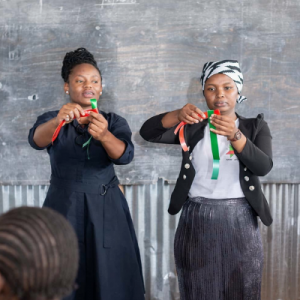
It is a privilege to receive stars from communities around the world. Here are some thoughts on what star weaving means to some of our incredible star weavers:
“I grew up during the troubles in Northern Ireland and I believe in the power of creativity in connecting communities. I am currently working with Amber Women’s Refuge in Kilkenny. Before and during COVID19 I have been raising awareness of domestic violence and introducing the stars to Ireland by creating star weaving communities with vulnerable members of the community. You are not alone.” – Siobhán McQuillan. Star Leader, Kilkenny Ireland.
We weaved these beautiful stars amidst chats and banter and vivid recounts of our horrifying experiences of violence. It was, however, during those serious moments that I realized just how powerful these spaces were for each one of us. Some struggled to tell it all, but along the way, each one of them found the strength and courage to share.
They shared horrifying childhood experiences, their friends, their extended families, even their present experiences. There was, hardly, a dry eye.” – Gladys Muthara, winner of the prestigious 2018 VSO Impact Beyond Volunteering Award.
4.7 million stars against violence & more achievements

We have been amazed at the stars that we have received from Samoa, Cook Islands, Ireland, Canada, England, Kenya, Barbados, Fiji, New Zealand, Japan, USA, Malaysia, Scotland, Tonga, Nigeria, Hawaii and Australia. In 2022, our star weaving community continues to grow!
Our active following of 9,000 plus followers on our social media are interested in staying connected online and participating in events and workshop training to address community cohesion, inclusion, mental health and sustainability.
If you follow us on Instagram and facebook, you will see that our star weavers are taking the stars to their workplaces, hospitals and schools and creating installations to lift morale, build supportive environments and cope with the stress and trauma of COVID-19.
One of our achievements has been the opportunity to partner with leading organisations and companies to create installations and star weaving workshops across the country, including architectus, ThomsonandAdsett architects, ARUP, Stockland shopping centres and Queensland University of Technology (QUT).
Many of these workplaces are high pressure environments with critical deadlines, stressed employees and fatigued teams. Introducing star weaving as a lunch time activity allows staff and sometimes clients, to learn a new craft and switch off from pressing projects for a few minutes.
Star weaving has been a great exercise for slowing the mind and focussing on breath work and doing something repetitive. Utilising the left (analytical) and right (problem solving) parts of the brain during star weaving helps us to reconnect with ourselves and recalibrate.
In the first 10 years of this project, we have been able to engage over 200 diverse communities as Star Weaving Communities. Our list of star weaving communities includes:
- Our first installation of 10,000 stars at the Big Design Market, Royal Exhibition Building 2012
- Portland District Health VIC & Metro North Mental Health Resource Team QLD
- All Hallows school & St Joseph’s Nudgee College QLD, Our Lady of La Vang SA
- Gold Coast Mosque and Brunswick Baptist Church
- Queensland Firebirds Netball,
- Austin Library Texas, Brisbane City Council Libraries, Deception Bay, Redcliffe, and Cleveland Libraries Queensland
- Refugee and asylum seekers Victoria and Queensland
- Aboriginal Housing Victoria
- Wendy Bird Wynnum
- Queensland Police
- Macdonagh Junction Kilkenny Ireland and Stockland Wendourie VIC
- TAP Africa and Perak Women for Women Malaysia
- BrisStyle & Laneway Festival QLD and Lotus Festival Indiana USA
We’re excited to work towards one billion woven stars over the next 10 years.
Help us to reach more people in need, who want to be part of connected and resilient communities and a future free from violence for all.
Join the One Billion Stars global community and Get Started Now!
